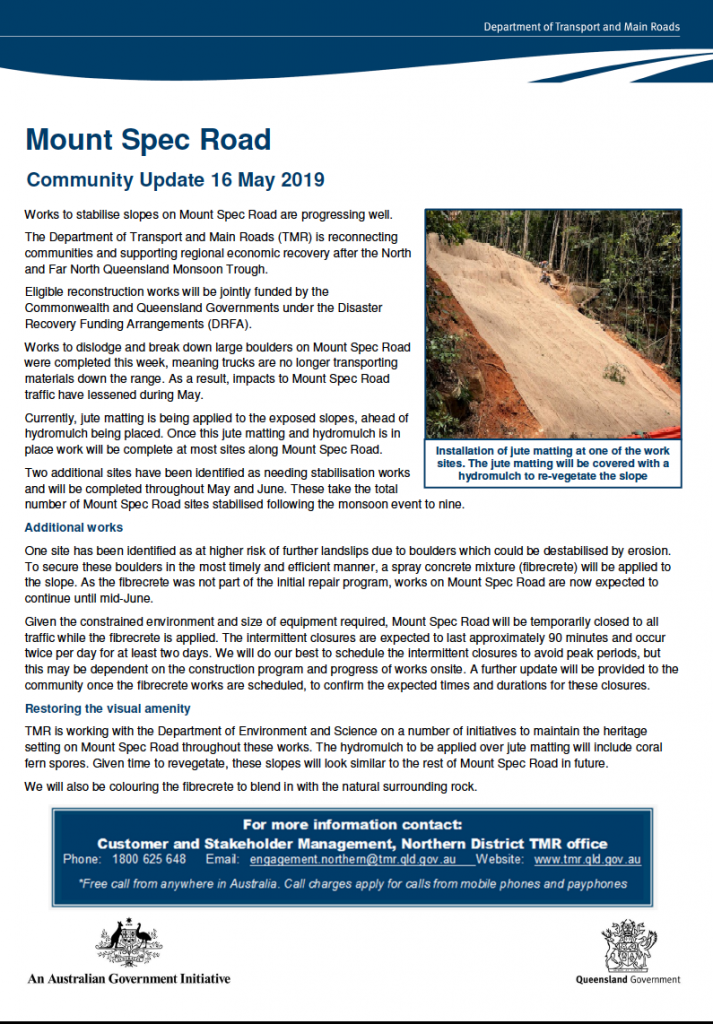
TMR Range Road Update, 16 May 2019


The Loop Road at Paluma is finally getting a face lift.
Anyone who has visited McClellands’s Lookout and the various walking tracks via the Loop Road in recent years will have noticed that the margins of the roadway were looking very much the worse for wear. The old wooden sleeper retaining walls along the roadway were mostly collapsed, termite infested and dilapidated. Old sleepers, soil and vegetation were strewn along the roadside and not only was this very unsightly, but the drainage of stormwater from the roadway was impeded during heavy rainfall.
The work being undertaken at the Loop Road includes the installation of a new retaining wall made from steel posts, concreted into the ground along a concrete base and drainage channel. A permanent retaining wall of concrete ‘sleepers’ is being erected between the steel posts.
This appears to be a great solution to what has been one of Paluma’s less attractive spots and an ongoing maintenance problem. The new retaining wall will be a termite proof, permanent and attractive solution, at the same time managing drainage and water flow from the roadway.
Contractors for Townsville City Council are undertaking the upgrade works and be aware that the northern end of the road is closed to vehicles during this work. The main car park and walking track to McClelland’s Lookout remain open.
Some views of the new retaining wall under construction are shown below.

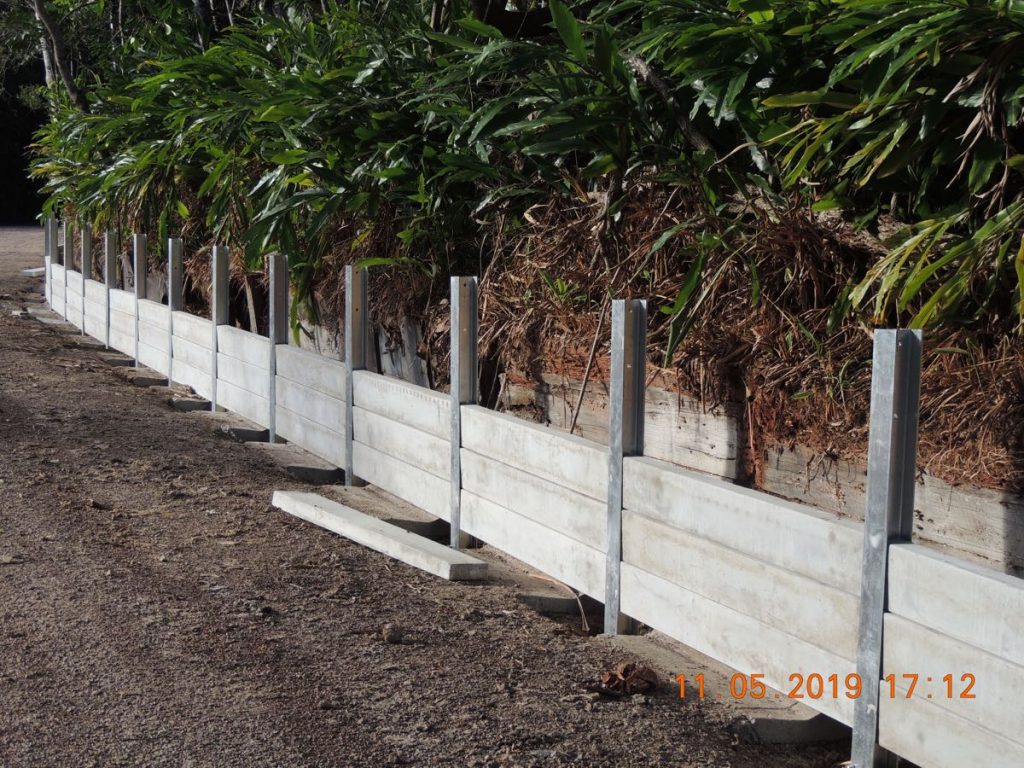
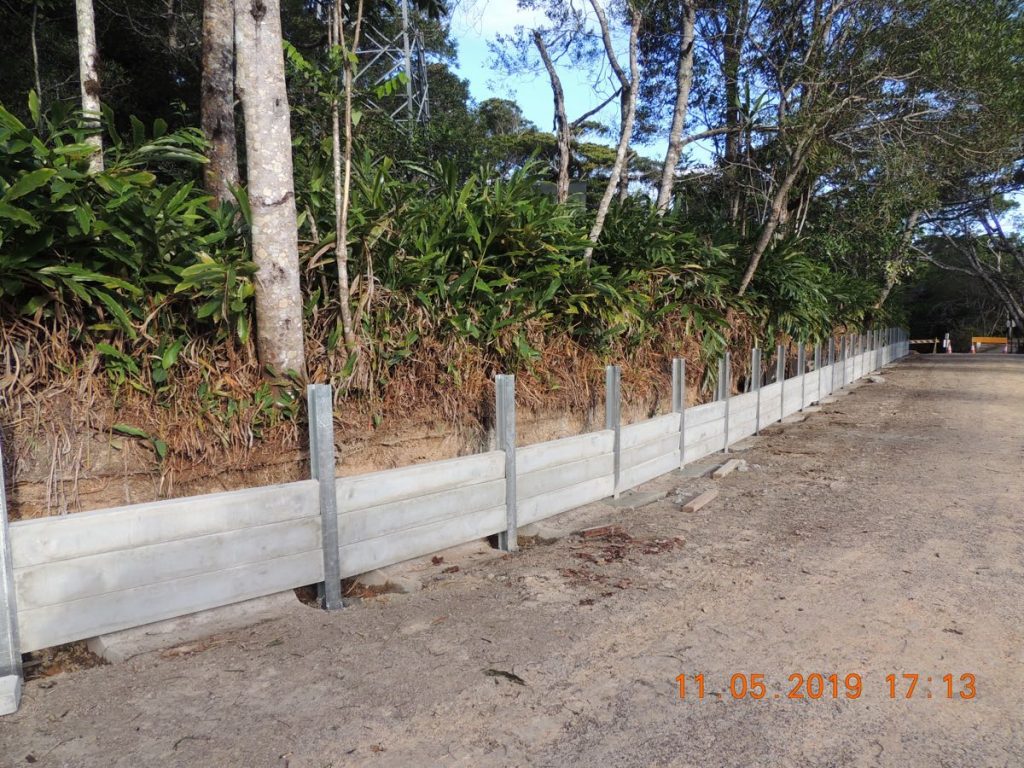
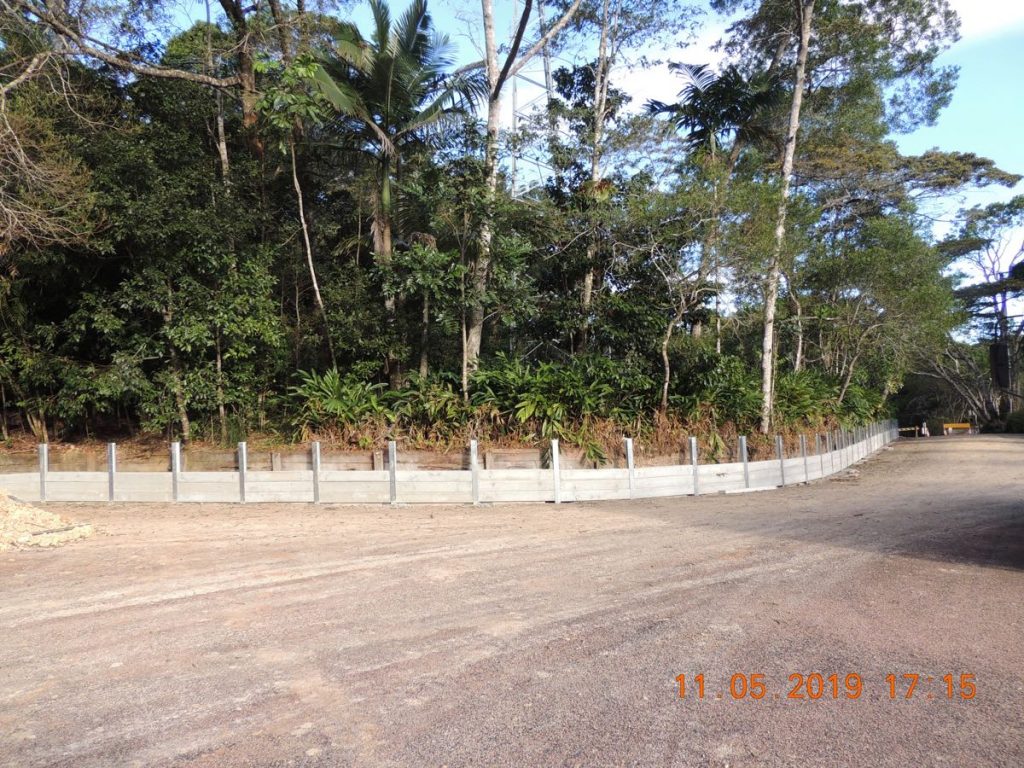
There are two upcoming events at Paluma to mark in the calendar for the month of June………..!
The Wattle ‘n’ Gum Bush Band invite everyone to attend their annual Bush Dance at the Paluma Community Hall on Saturday 29th June at 7.30 PM. Details are provided in the flyer below.
After dancing the night away, you can then catch up on your shopping at the Paluma Sunday Market on Sunday 30th June between 9 AM to 1 PM. Celebrate the end of the financial year with a sausage or two at the PDCA Sausage Sizzle.
We are looking for new stall holders for the Paluma Sunday Market so if you have some goods to sell please contact Lynn Hyland at email address: lynnhyland@optusnet.com.au
See you there!

An early morning walk to Mc Clellands’s Lookout at Paluma is always a treat, but especially so at this time of the year. With the humidity and cloudy skies of summer and the wet season now gone, the early mornings are crisp and clear, without a cloud in the sky.
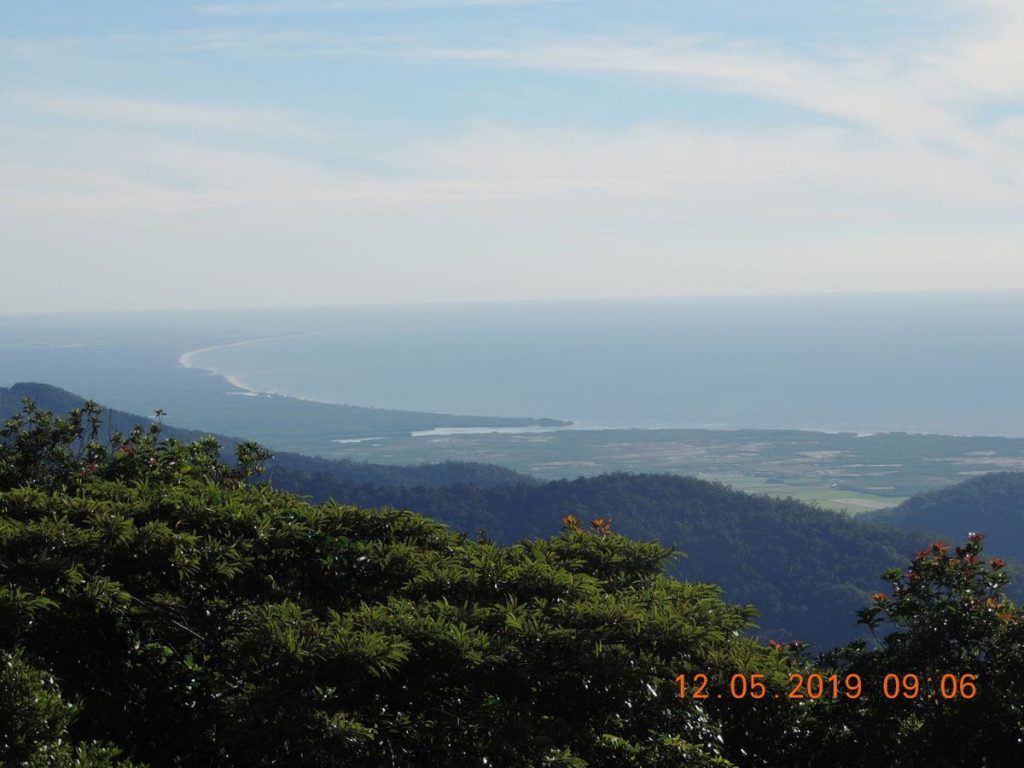
For the first time this year, the temperature dipped to single digits on Sunday morning (12 May) with a cool 9 degrees in the village. Gone is the heat-haze of summer, so that the view from the Lookout is particularly special. So clear is the view of the coast and offshore islands that you can clearly see their outline and you can even identify each individual island – especially with the assistance of the interpretive signage from the Lookout’s best vantage point.
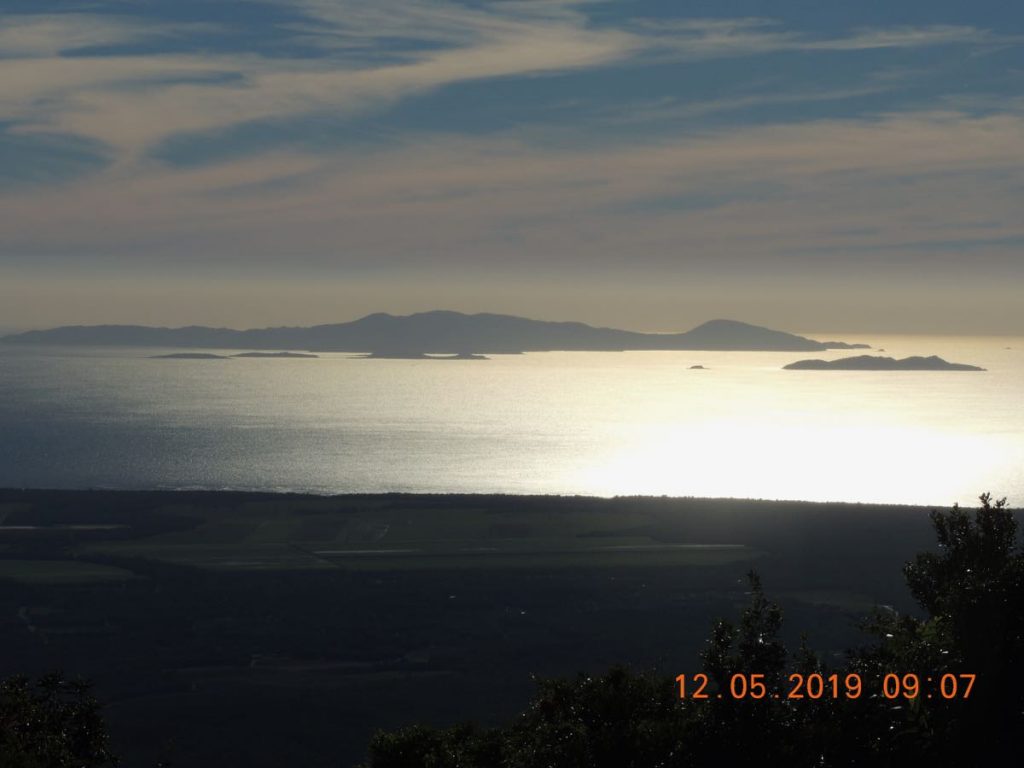
There is no better place at Paluma village to sit and contemplate the view, whilst thawing out and soaking up the warmth of the sun’s early morning rays. On Sunday morning the visit to the Lookout was enhanced by the sound of dingoes calling from somewhere downslope, deep within the rainforest. With the cool clear air, the eerie sound of their calls seemed to carry for miles.
A cup of lemon myrtle tea and a slice of mandarin and almond cake at the Rainforest Inn topped off a rather delightful early morning stroll.
Just another day in the paradise we know as Paluma.
Len Cook would like to advise that the new Gallery is OPEN FOR BUSINESS.
Len Cook Ceramics (formerly known as Paluma Pottery) is located at 29 Lennox Crescent, off Mount Spec Road. You can’t miss the sign on the corner of Lennox Crescent.
The Gallery will be OPEN on a regular basis over the coming months, with the usual business hours of 10 AM to 4 PM.
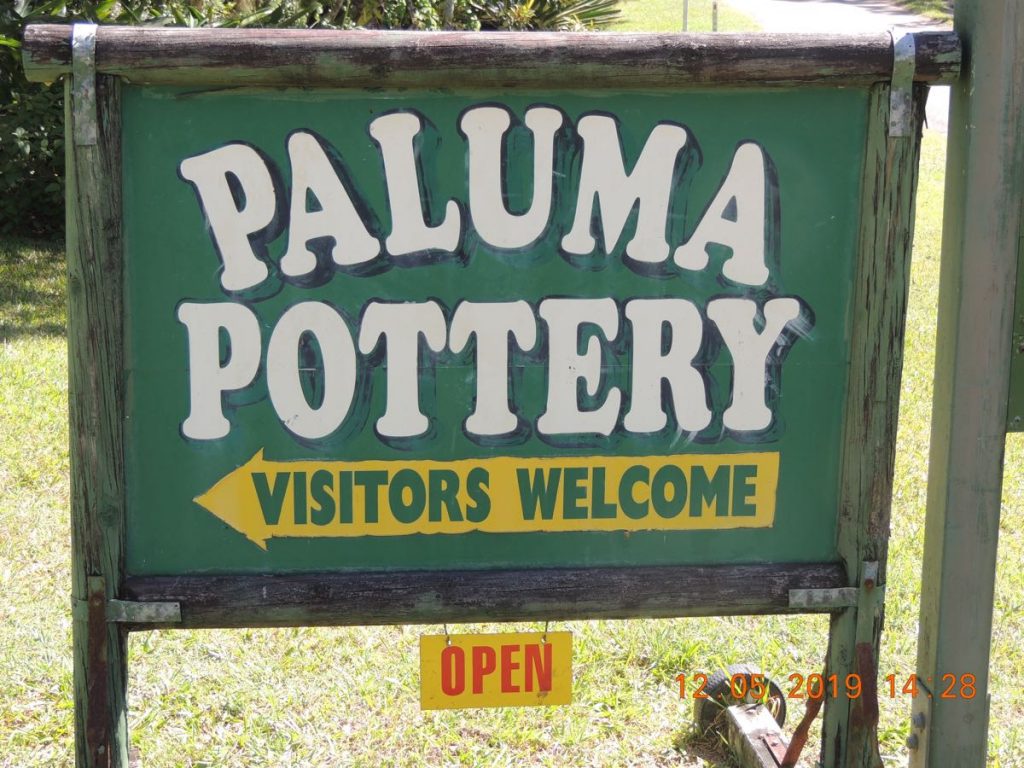
During this long weekend, the birds at our feeder have become more and more numerous, with Satin Bowerbirds making their first appearance for the year, and Catbirds sneaking in at dawn and dusk. But it is the Rainbow Lorikeets that have dominated the show. Since we first put up our feeder in 1996, I have recorded the same 10 species coming in for a feed (see list below). The species composition may vary at other feeders depending on the food offered (we consistently use dates, softened and mashed up in water). Originally, Lorikeets were almost never at our feeder, but since cyclone Yasi the Rainbow Lorikeets are often a dominant visitor, with the occasional Scaley-breasted Lorikeet thrown into the mix
Yesterday morning and this morning the Rainbow Lorikeets came in numbers I have never seen before. I suspect the entire population of the village was at or around my feeder. The picture below reminds me of the old competition one saw at fairs where you had to guess the number of jellybeans in a large glass jar. I reckon there are 24 in the first photo and 27 in the second (both images have been cropped to include the central mass of birds only). Any other estimates?
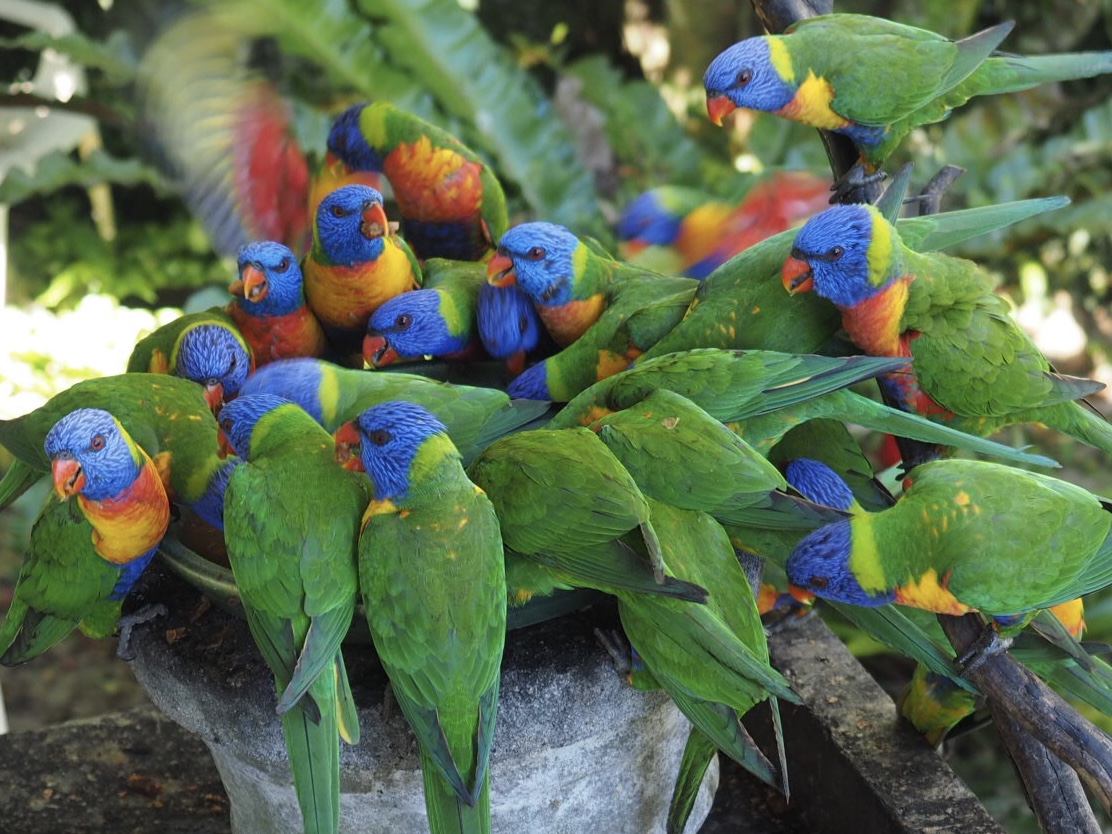
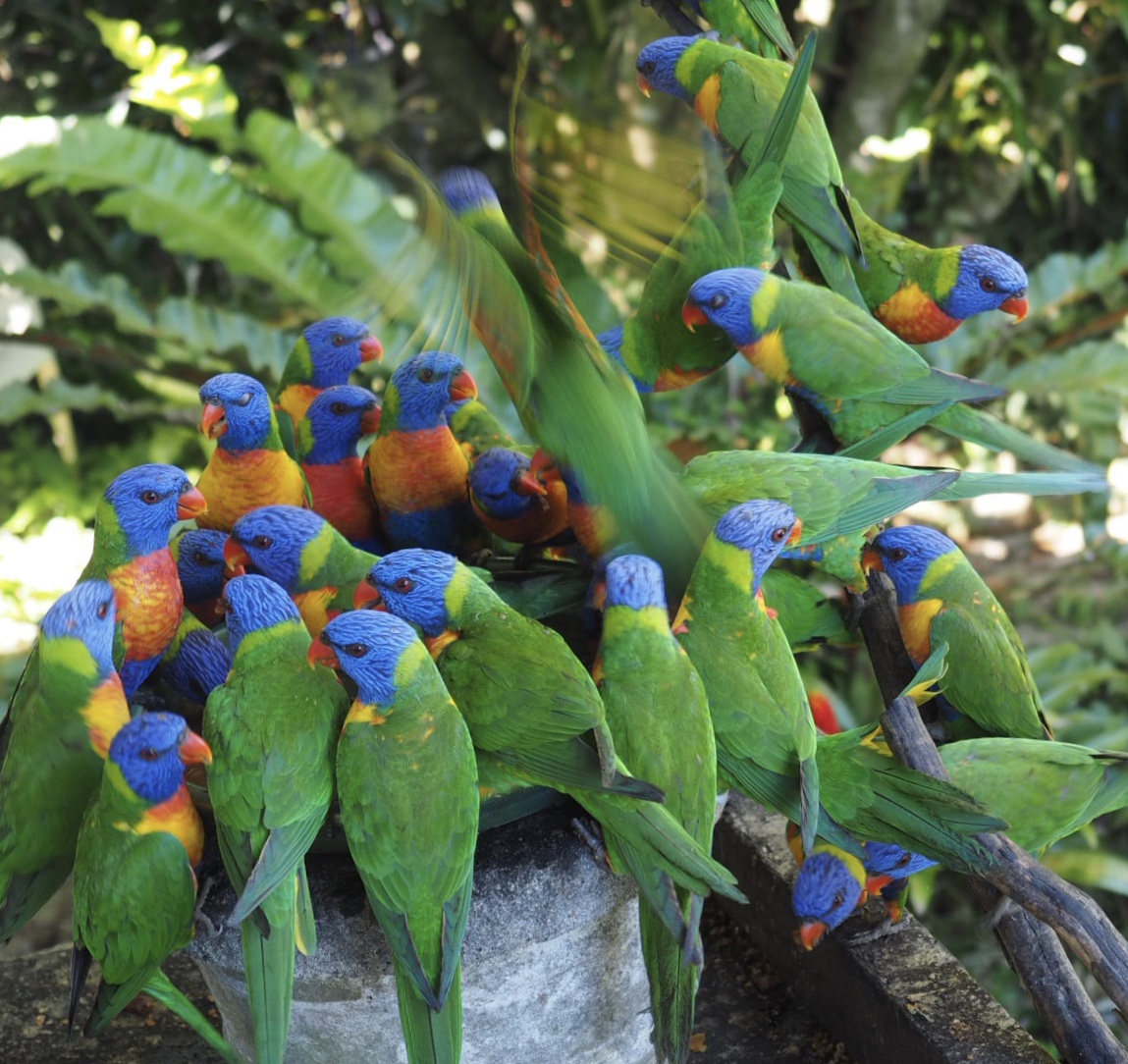
Here is my list of birds that I have recorded at my feeder (the last two I try to discourage). I would be interested to hear from other residents who could add to this list. Please also include what type of food you put out.
Jamie Oliver
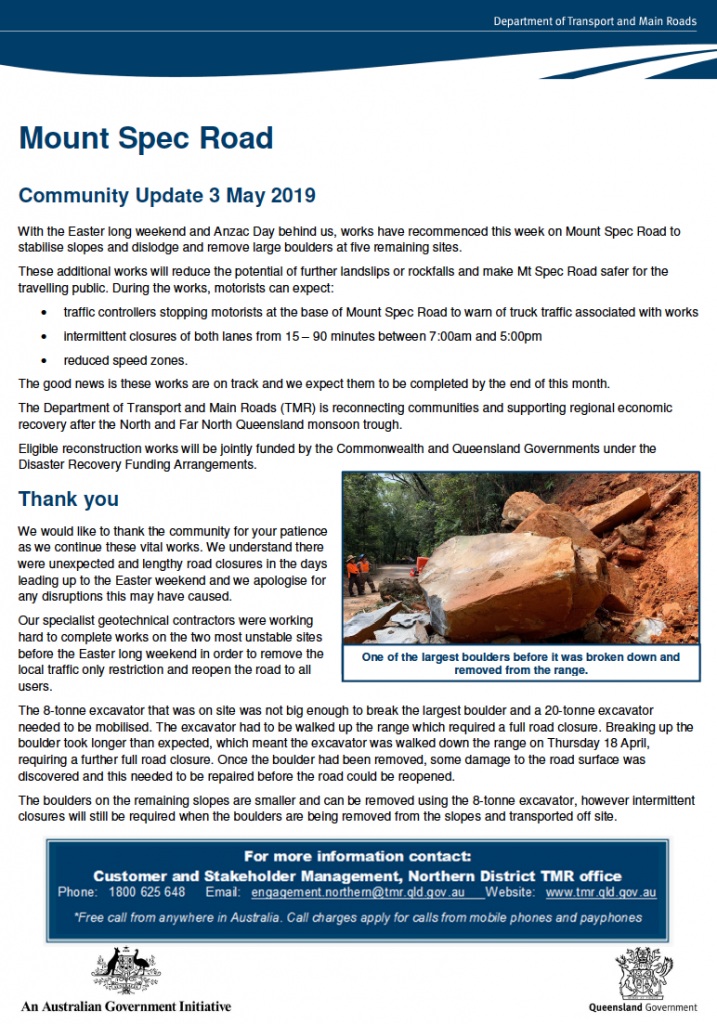
At its recent meeting, the Townsville City Council endorsed a recommendation from its officers that the opening of Lake Paluma to additional recreational/commercial opportunities will not be contemplated due to its low-key, nature based recreational activities and camping focus. This decision will ensure that the dam remains closed to motorised boating and other commercial activities. This is an excellent outcome. The PDCA has previously communicated to the TCC its strong opposition to any change in the use of the Dam. Margie Ryder, our local Councillor has made our views clear to the Council. We appreciate that her efforts on our behalf have helped to achieve this outcome.
Among the colourful visitors to my garden recently was this beautiful female Orchard Swallowtail Butterfly, (Papilio aegeus). This species is also known as the Large Citrus Butterfly because of the preference of its larvae for feasting on citrus leaves. The butterfly feeds on the nectar of plants, particularly lantana. This one however was resting on a flower-laden choko vine.
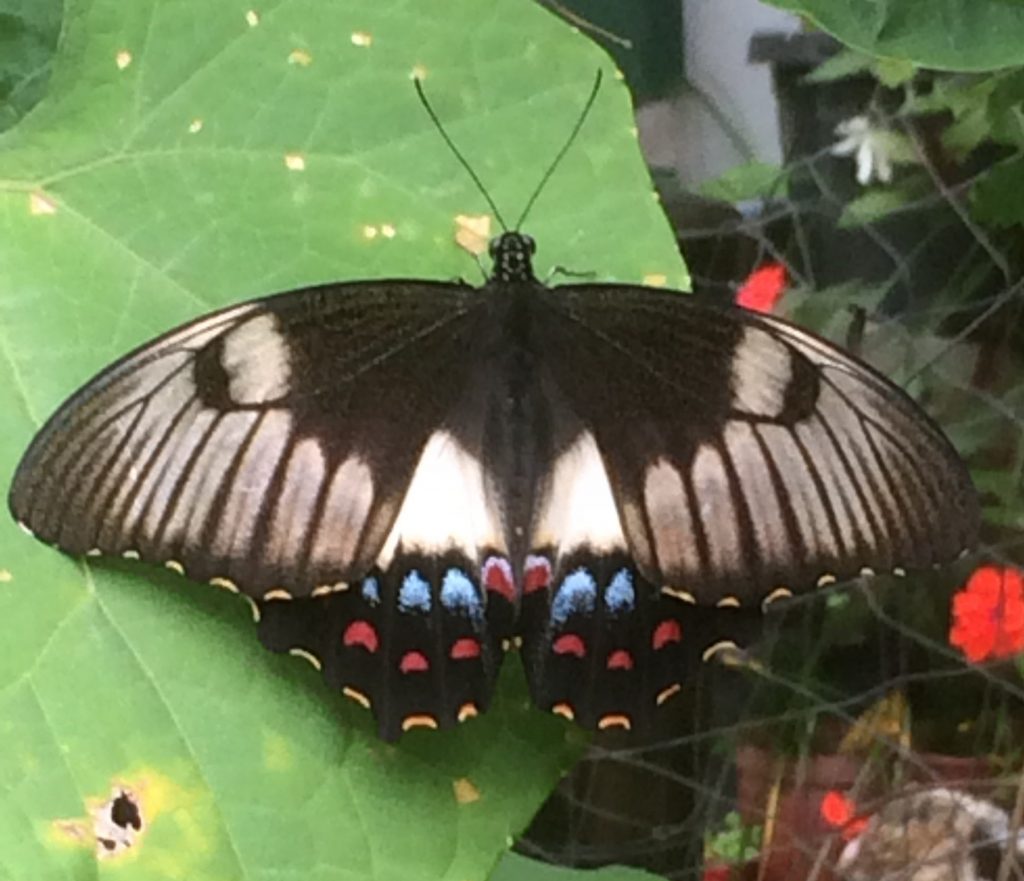
The Orchard Swallowtail Butterfly is found in Eastern Australia, ranging from Victoria to Cape York and into PNG. Its usual habitat is lowland rainforest, dry eucalypt woodlands, orchards and suburban gardens so it is not common to see one here in Paluma. The female lays eggs on the underside of leaves of host trees and the eggs hatch a week later. The larvae are patterned in green, brown and a creamy colour and look remarkably like bird droppings: no doubt an excellent camouflage from potential predators.
The female with a wing span of about 105 to 110 mm is slightly larger and more colourful than the male but both attract attention when fluttering through the garden. This butterfly is sometimes considered a pest because of its habit of feeding on citrus leaves in suburban gardens.
Text and photo by Colwyn Campbell
There has understandably been a lot of talk about rain and rainfall records over the last few months. While the daily falls that Len Cook recorded in February (see previous post and also additional info at Higgins Storm Chasing) are impressive and probably unprecedented (over 2.5 metres in 11 days!), it begs the question of how many records were broken in Paluma this wet-season and just how wet Paluma is compared to other areas in the north (and elsewhere).
For those who are unfamiliar with the quote alluded to in the title of this post, the famous author Mark Twain once remarked that there are 3 types of lies: Lies, Damned Lies, and statistics. This post may serve to underscore his point that you can prove just about anything you like if you carefully choose your statistics.
We now have 50 yrs of rainfall records for the Ivy Cottage BoM station (1969-2018) but due to some months with missing data, there are gaps in the records of annual totals. Fortunately, the late Roy Mackay kept his own records and I have been able to use his graph to fill in the missing annual totals (1992,1996-99). Lets start with how this year’s wet season in Paluma compares to the long-term record. Well, we have had the wettest February on record with 1986.7mm. In addition this wet-season from November ’18 to April ’19, even though we have no official data for April, has already been the the wettest on record with 4,636.9mm for November to March. Whether or not the 11 day accumulated total of 2571 is also a record breaker would require a deeper analysis of daily totals over the last 50 years – not something I, or anyone else detectable from a google search has been prepared to do. Nevertheless this year was a record breaking wet season in more than one way. We have already had enough rainfall from Jan-March to exceed 90% of the annual records, so there is also a reasonable chance that 2019 will be the wettest on record.
While we are discussing the long-term record for Paluma on its own, it is worth asking whether or not there have been any obvious trends or patterns in our rainfall. The graph below indicates that there has been no appreciable increase or decrease in mean rainfall over the last 50 years, but there does appear to be regular cycles of wet and dry periods with rainfall peaks separated by 7-9 years.
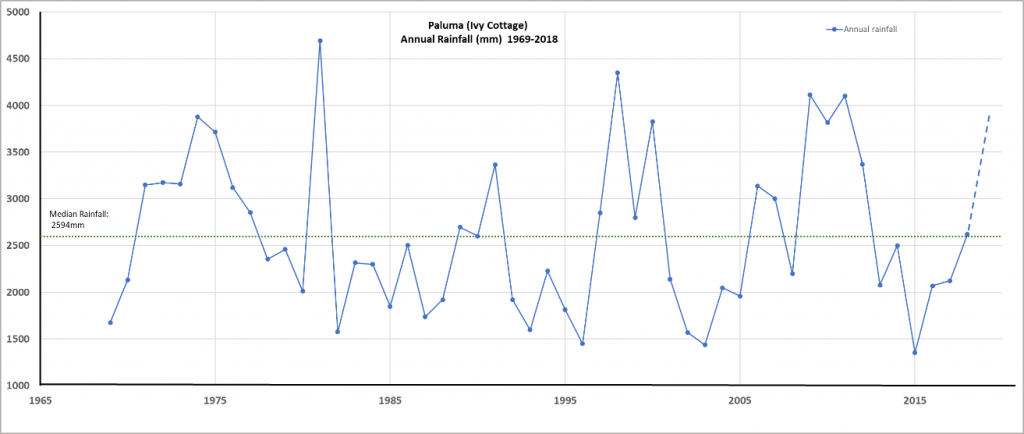
Charlie Allen recently forwarded me a graph from a now closed BoM station at Mt Spec (somewhere near the summit). The records go from 1933 to 1967 with no overlap between it and the Ivy Cottage station. Interestingly, the records indicate much higher rainfalls at Mt Spec. The median annual rainfall for the 32 years of complete data was 3324mm, which is almost a meter more than Ivy Cottage (2355mm). Also there were 8 years at Mt Spec with annual falls greater than 4m (25% of all years) and of these 3 exceeded 5m. At Paluma, we have only had 4 years exceeding 4m annual rainfall (12.5%) and none that exceeded 5m. The Mt Spec record also shows a clear decline in rainfall during the recording period. These data from Mt Spec raise the question of whether rainfall at Paluma was also higher in the 30’s to 50’s with a subsequent decline. We may never know.
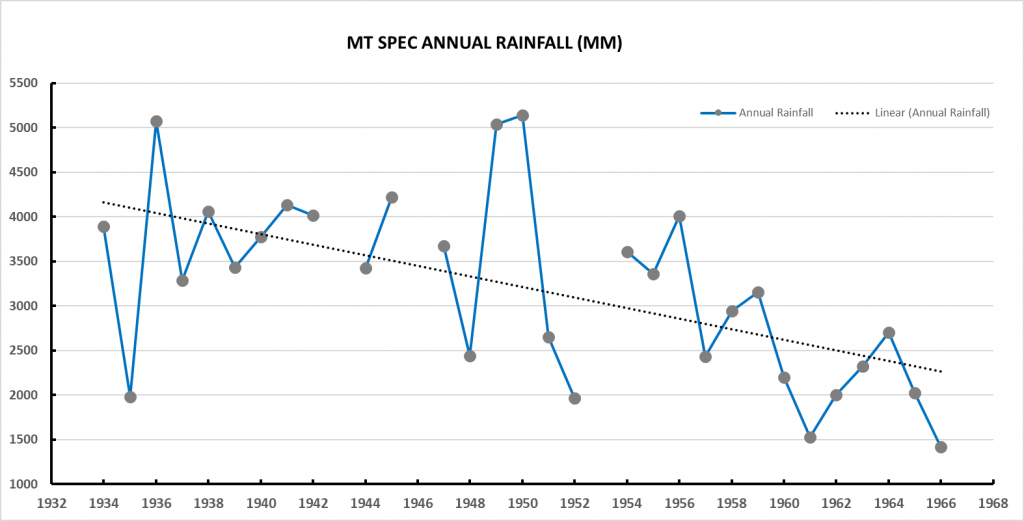
Do any of these new records mean that Paluma has toppled our two wettest towns in Australia (Babinda and Tully) off their pedestals? The short answer is no. After scratching around amongst the totals, I did find that our new record for February is higher than the highest February rainfall in Tully but not for Babinda. However I can report that our highest daily rainfall ever recorded in Paluma (634mm in January 1972) is higher than any daily totals for Tully or Babinda! Also it is possible that our recent 11 day cumulative total exceeds anything recorded there (it’s too much work to check on this!). But before we crack open a bottle of bubbly, bear in mind that having had one exceptional wet day, or series of days doesn’t really make us generally wetter than towns with much higher averages (see comparison table below). And besides, it turns out that other places in Australia have had much wetter single days – Crohamhurst in SE Qld recorded 907mm on a single day in 1893, and if we look globally, La Reunion holds the world record for daily rainfall with a staggering 1.825 metres in 24 hours.
If all of my efforts to find some way in which Paluma can be considered uniquely “wet” seem a bit over-the- top, spare a thought for Babinda and Tully.
In terms of the key statistics I have seen, Babinda easily exceeds Tully in terms of average annual rainfall (4.287 vs 4.092 metres per year) and the same goes for median rainfall, making it an easy pick for the wettest town in Australia. In recognition of this humble achievement Babinda has placed a small golden gumboot in the window of its post office . Not to be outdone, Tully (in the spirit of overcompensation) has argued that it has the record for the wettest year ever (7.898m in 1950) and has erected a massive 7.9m high golden gumboot in a local green space.
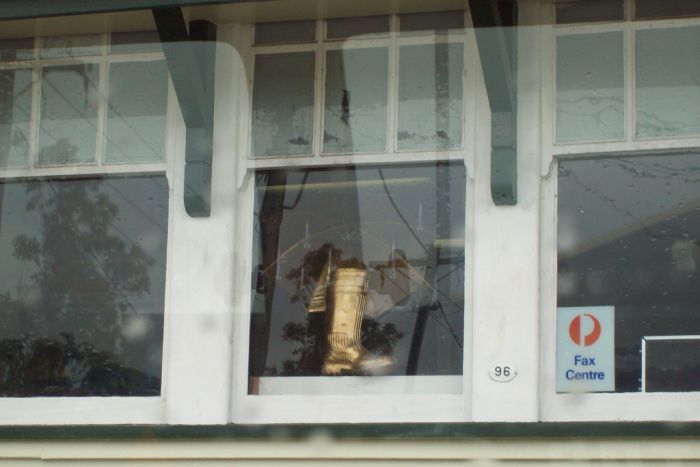
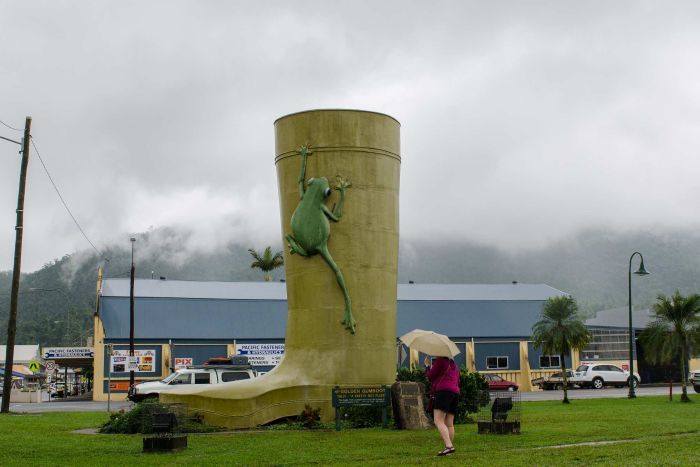
Ironically neither the town of Babinda or Tully come close to being the wettest “place” in Australia. That title goes to the nearby unpopulated summit of Mt Bellenden Ker, which boasts a massive annual average of 8.12 metres and a record year of 12.46 meters in 1973. Makes Paluma seem positively arid in comparison!
| Place | Ann. Av (mm) | Ann. Median (mm) | Highest Ann. Total (mm) |
| Paluma | 2,585 | 2,355 | 4,691 |
| Tully | 4,092 | 3,914 | 7,898 |
| Babinda | 4,287 | 4,092 | 7,040 |
| Bellenden Ker | 8,121 | 7,675 | 12,461 |